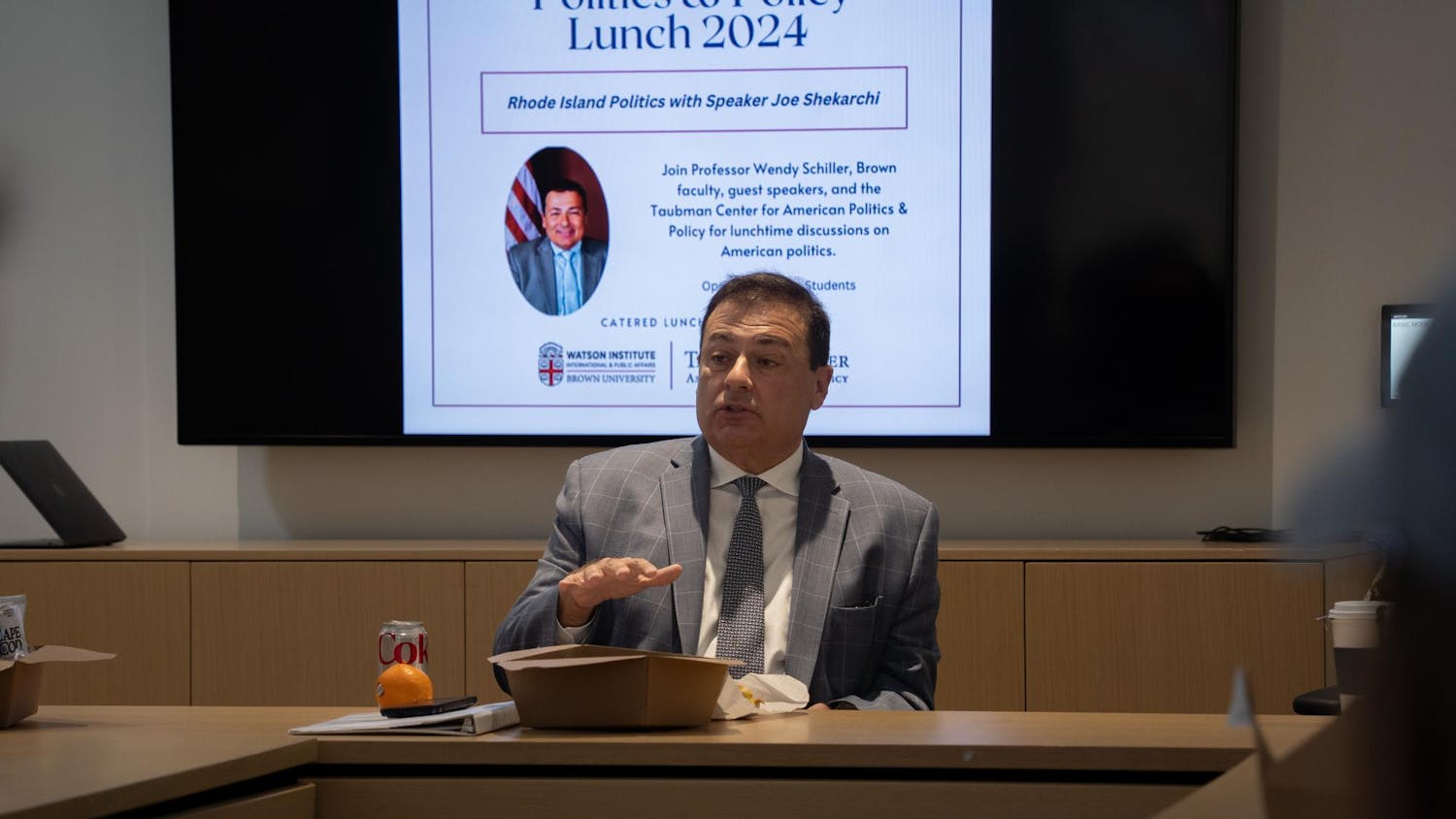Professor of Neuroscience Monica Linden’s eight-year-old daughter stared at her mom through the glass doors of her home office, waiting to share something while Linden taught a seminar on brain regions that ran for over an hour.
Professor of International and Public Affairs Ari Gabinet can no longer buy fresh cookies and fruit for students to eat in class during breaks, as he regularly did for his in-person sessions.
For professors teaching their first week of virtual classes, the kickoff of the semester was accompanied by a new set of challenges, surprises and a few technical difficulties. Three professors interviewed by The Herald all experienced some technological roadblocks, whether from students’ faulty internet connections, Zoom procedural issues or, in the case of Linden, a computer microphone that suddenly muted her for a portion of class time.
But technical issues aside, all three professors were encouraged by the high level of student engagement they witnessed during an unconventional first week of classes.
Across departments, professors have adapted to an unfamiliar mode of instruction, finding creative ways of promoting student engagement and connection through the screen. Over the summer, the three faculty members participated in a course design institute offered by the Harriet W. Sheridan Center for Teaching and Learning, which provided rigorous coaching on how to teach with virtual and hybrid models.
For Ross Cheit, professor of political science and international and public affairs, the summer program prompted him to approach his role as an educator in a different way. “For me, it really just challenged all my assumptions about teaching and how I’m doing it and why,” he said. He used the lessons from the program to develop new strategies in the virtual classroom for his course, POLS 1050: Ethics and Public Policy.
Cheit explained that before the pandemic he “taught in a really interactive way that relied on being in the room with people and being able to assess their reactions.” To increase student engagement in an online setting, he now posts polls to solicit students’ opinions on different topics and generally tries to break up class time in order to avoid the tedium of extended periods of screen-based lecturing.
In the first week of online classes, Cheit also took advantage of Zoom features like break-out rooms, which place students in smaller groups, creating an opportunity for discussions that would not have factored directly into class time pre-pandemic. Cheit said these discussions give students the chance to have the conversations they would have had after class in their dorms or over breakfast in the dining halls under different circumstances.
“You could be a professor and barely engage (with) technology, and now you can’t avoid it.”
Linden, along with Cheit, has been impressed by the level of student participation over the course of the first week of online classes. In fact, she found that her students were engaging with the material a lot more intensely than she tends to witness at the start of a traditional semester. In the first few days, students in her lecture class, NEUR 1030: Neural Systems, as well as those in her seminar, NEUR 1930N: Region of Interest: An In-Depth Analysis of One Brain Area, attended office hours and posted numerous questions on the online query platform, Piazza.
Linden has made conscious efforts to redesign areas of her teaching to include more opportunities for student reflection and collaboration. She has students working in study groups, on group projects and in other interactive ways to promote community building. Later in the semester, she plans to administer open-book exams, which will require her to ask more challenging questions.
Both Linden and Cheit voiced concerns that virtual learning may lead to feelings of isolation among students, so the professors began implementing their new collaborative strategies on the first day of classes.
Gabinet usually starts off IAPA 1804D: Legal Methods for Public Policy with an introduction covering the background of his own legal career, but to adapt to Zoom teaching, he chose to launch his two and half-hour seminar with a class discussion of a hypothetical scenario in which different students played different roles. This approach helped jumpstart a dialogue among members of the course and served to enliven the virtual classroom. He made sure to give students two short breaks during class, rather than just one, to reduce stretches of uninterrupted screen time.
Gabinet was nervous about establishing a class dynamic with students who were meeting each other for the first time over Zoom. Nevertheless, he was pleased to find that students seemed eager to engage, despite the unusual circumstances of the start of the school year.
Gabinet, who suffers from back pain, pointed out that teaching over Zoom means he no longer has to be on his feet for extended periods of time, providing him with the silver lining of some physical relief.
“I think most of us are working harder than ever on our courses. But it’s probably not to teach the best courses we’ve ever taught.”
Before, “you could be a professor and barely engage (with) technology, and now you can’t avoid it,” Cheit said. “A lot of us feel like we now have home studios.” For the asynchronous components of their courses, he and Linden pre-record video clips of themselves lecturing, which is new to both of them.
Professors were encouraged by the success of their initial online course meetings while remaining aware of the limitations of providing instruction over video call. “I think most of us are working harder than ever on our courses,” said Cheit. “But it’s probably not to teach the best courses we’ve ever taught.”




